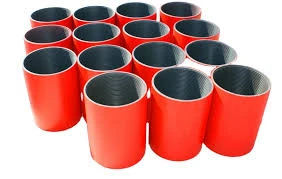- Afrikaans
- Albanian
- Amharic
- Arabic
- Armenian
- Azerbaijani
- Basque
- Belarusian
- Bengali
- Bosnian
- Bulgarian
- Catalan
- Cebuano
- Corsican
- Croatian
- Czech
- Danish
- Dutch
- English
- Esperanto
- Estonian
- Finnish
- French
- Frisian
- Galician
- Georgian
- German
- Greek
- Gujarati
- Haitian Creole
- hausa
- hawaiian
- Hebrew
- Hindi
- Miao
- Hungarian
- Icelandic
- igbo
- Indonesian
- irish
- Italian
- Japanese
- Javanese
- Kannada
- kazakh
- Khmer
- Rwandese
- Korean
- Kurdish
- Kyrgyz
- Lao
- Latin
- Latvian
- Lithuanian
- Luxembourgish
- Macedonian
- Malgashi
- Malay
- Malayalam
- Maltese
- Maori
- Marathi
- Mongolian
- Myanmar
- Nepali
- Norwegian
- Norwegian
- Occitan
- Pashto
- Persian
- Polish
- Portuguese
- Punjabi
- Romanian
- Russian
- Samoan
- Scottish Gaelic
- Serbian
- Sesotho
- Shona
- Sindhi
- Sinhala
- Slovak
- Slovenian
- Somali
- Spanish
- Sundanese
- Swahili
- Swedish
- Tagalog
- Tajik
- Tamil
- Tatar
- Telugu
- Thai
- Turkish
- Turkmen
- Ukrainian
- Urdu
- Uighur
- Uzbek
- Vietnamese
- Welsh
- Bantu
- Yiddish
- Yoruba
- Zulu
well tubing and casing
Understanding Well Tubing and Casing An Essential Component in Drilling Operations
In the oil and gas industry, the terms well tubing and casing are crucial for the success of drilling operations. These two components are part of the wellbore system and play specific roles in ensuring the integrity, safety, and efficiency of the well. This article will delve into the functions, types, and significance of well tubing and casing in the context of energy extraction.
What is Well Casing?
Casing refers to the series of pipes that are installed in the wellbore after drilling. The primary purpose of casing is to stabilize the wellbore, prevent the surrounding soil and rock from collapsing, and isolate different underground formations to prevent fluid migration between them. Casing serves as a barrier against the influx of contaminants and protects the freshwater aquifers from potential pollution from hydrocarbons or other unwanted substances.
There are several types of casing, with the most common categories being
1. Surface Casing This is the first layer of casing set in the well and protects shallow water zones and provides structural support for the drilling rig. It usually extends a few hundred feet below the surface.
2. Intermediate Casing Installed deeper than the surface casing, intermediate casing is used when drilling through unstable formations. It provides additional reinforcement to maintain a stable wellbore.
3. Production Casing This final casing string is present throughout the productive zone of the well. It typically runs deep enough to reach the hydrocarbon-bearing formations and is designed to withstand the pressures and corrosive environments encountered during production.
The Role of Well Tubing
Well tubing, on the other hand, is placed inside the casing and is utilized for the transportation of fluids, such as oil and gas, from the reservoir to the surface. Unlike casing, which is designed to provide structural integrity, tubing is primarily focused on facilitating the efficient flow of products.
well tubing and casing

Tubing is generally smaller in diameter compared to casing and typically comes in various grades and sizes to meet the operational requirements. The major types of well tubing include
1. Production Tubing This is the main channel through which produced fluids enter the surface facility. It is designed to withstand high pressures, temperatures, and corrosive fluids encountered in the reservoir.
2. Injection Tubing Used for injecting fluids (like water or gas) back into the well to maintain reservoir pressure, increase recovery rates, or for secondary recovery operations.
3. Liner Tubing Sometimes used instead of full casing, liner tubing is hung from a previous casing string and doesn't reach the surface, allowing selective isolation of certain zones in the well.
Importance of Well Tubing and Casing Design
The design of both casing and tubing is critical for effective well management. Engineers must carefully consider factors such as the well depth, expected pressures, temperature variations, and the properties of the fluids being transported. This necessary attention to detail can prevent costly failures such as blowouts, leaks, or structural collapse of the well.
Additionally, using the correct grades and materials, such as carbon steel or corrosion-resistant alloys, can enhance the longevity of both casing and tubing systems. Advanced materials and technologies are important in minimizing risks associated with corrosion, which can significantly impact operational efficiency over time.
Conclusion
In summary, well tubing and casing are fundamental elements of drilling operations within the oil and gas industry. Their primary functions—casing providing stability and isolation, and tubing facilitating the flow of products—are vital for safe and effective energy extraction. As advancements in drilling technology continue to evolve, the design and materials used for both well casing and tubing will play an increasingly important role in enhancing performance, safety, and environmental stewardship within the industry. Proper understanding and application of these components are key to the long-term success of any drilling operation.
-
Tubing Pup Joints: Essential Components for Oil and Gas OperationsNewsJul.10,2025
-
Pup Joints: Essential Components for Reliable Drilling OperationsNewsJul.10,2025
-
Pipe Couplings: Connecting Your World EfficientlyNewsJul.10,2025
-
Mastering Oilfield Operations with Quality Tubing and CasingNewsJul.10,2025
-
High-Quality Casing Couplings for Every NeedNewsJul.10,2025
-
Boost Your Drilling Efficiency with Premium Crossover Tools & Seating NipplesNewsJul.10,2025







